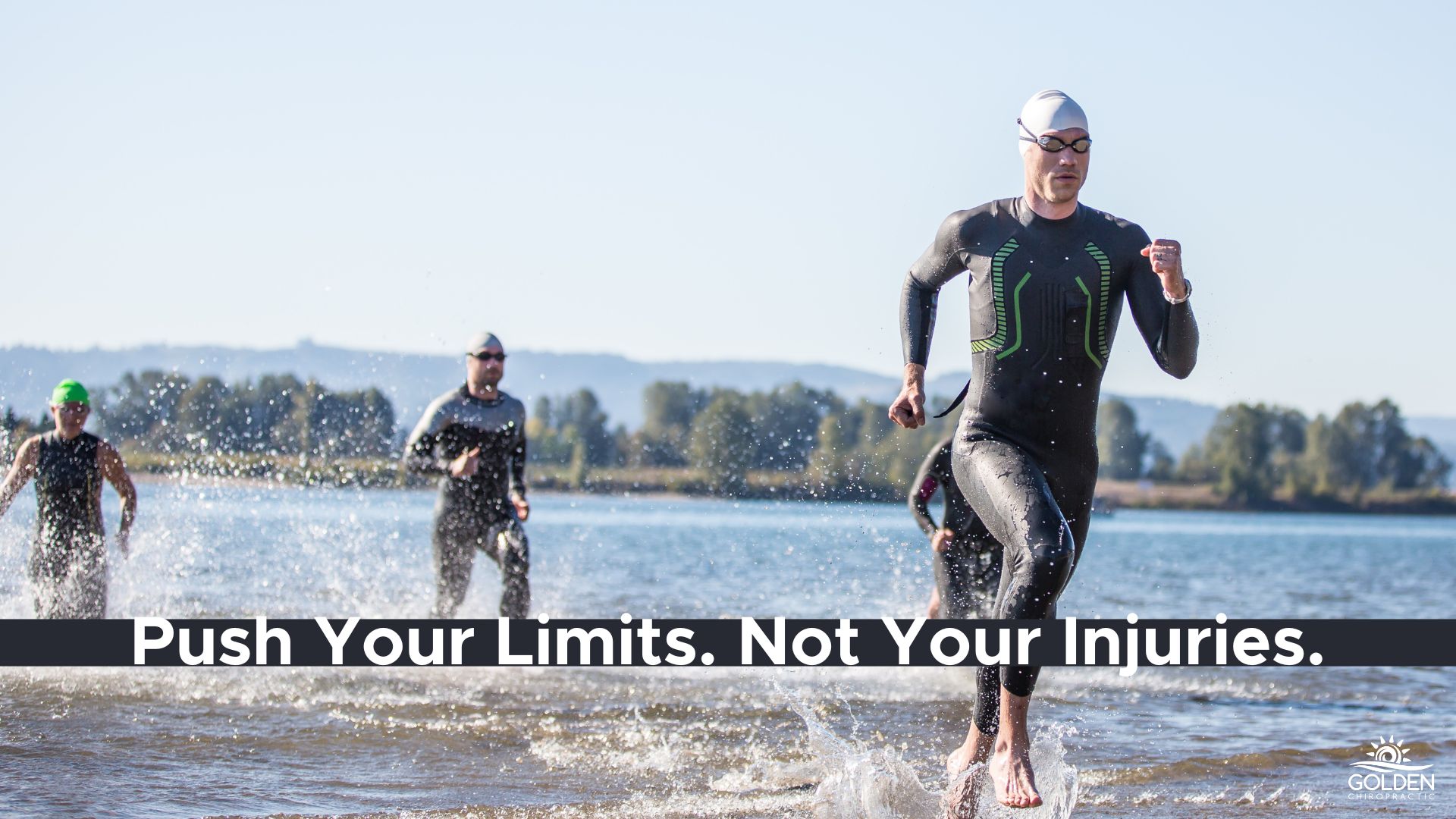
04/14/2025 by Dr. Joe Bell
Avoid the 5 Most Common Triathlete Injuries
If you’re training for a triathlon, you’re trying to grow stronger in three different disciplines.
Growing stronger means putting increasing stress on various muscle groups and joints. This added stress over time can cause injuries if you’re not thoughtful about how you train.
It definitely feels great to get fitter and fitter, but it’s also important to remember that you've got to train smart.
As a runner myself, I know what it feels like when your legs scream halfway through a long run—and how frustrating it is to get sidelined when you're finally feeling strong.
For triathletes, every part of your training matters. So when something hurts, it doesn’t just affect your workouts—it messes with your whole lifestyle: how you sleep, what you eat, who you hang out with.
The mental game can be just as tough as the physical, and taking time off from injury will not make you happy.
Most triathlete injuries don’t come from one wrong move.
Most injuries we treat have built up over time. They’re repetitive stress injuries—tiny imbalances or overuses that add up.
The good news is that these injuries are preventable, if you know what to look for and you take care of your body along the way.
The 5 most common triathlete injuries.
These are the most common injuries we see in triathletes—and what you can do to keep pushing forward without burning out.
1. Swimming Injury: Rotator Cuff Tendonitis
Repetitive strokes can cause inflammation.
What causes rotator cuff tendonitis in swimmers?
Overhead strokes done over and over (and over) can lead to inflammation in your shoulder’s rotator cuff. If you're feeling a dull ache or sharp twinge while swimming, don’t ignore it.
How to avoid rotator cuff tendonitis:
- Get your shoulder adjusted to improve joint mechanics
- Strengthen the muscles behind your shoulder blade to balance the ones in your chest
- Use supportive taping if you’re still training through recovery
- Stretch before and after every swim—seriously, even five minutes helps
2. Cycling and Running Injury: Iliotibial (IT) Band Syndrome
Your IT band is a thick band of fascia that helps stabilize your knee and hip when running or cycling.
What causes IT band syndrome?
When the muscles that connect to your IT band—like your glutes, your TFL (that little muscle on the side of your hip), and your outer quad—get tight, they can yank on the IT band and make it feel even more irritated.
That constant tension is a big reason why those IT band symptoms stick around.
How to avoid IT band syndrome:
- Foam roll your outer thigh and hips—yes, it hurts, but it works
- Strengthen your glutes and hip abductors to take pressure off the band
- Warm up well before a ride or run, and cool down after
3. Running Injury: Achilles Tendonitis
Your Achilles tendon handles a ton of force every time your foot hits the ground while running.
What causes Achilles Tendonitis?
The Achilles connects your big calf muscles (the gastrocnemius and soleus) to your heel bone, and powers you through every step, jump, and rise up on your toes.
With speed work or a sharp mileage increase, it’s easy to overdo it. That’s when your Achilles tendon gets inflamed.
How to avoid Achilles Tendonitis:
- Stretch your calves and feet daily
- Massage the area to improve blood flow and reduce tension
- Support with kinesiology tape or compression when needed
- Rest and ice during flare-ups
4. Cycling and Running Injury: Patellar Tendonitis
If your knee hurts just below the kneecap, especially during biking or running, it might be patellar tendonitis.
What causes Patellar Tendonitis?
Your patellar tendon is a thick band of tissue that runs right through the front of your knee. It connects your kneecap to your shinbone—and it’s a key player any time you need to straighten your leg.
So whether you're running or cycling, this tendon’s doing a lot of heavy lifting.
How to avoid Patellar Tendonitis:
- Get a proper bike fitting: it's a game-changer
- Foam roll your quads
- Strengthen the whole kinetic chain: quads, hamstrings, glutes, and calves
- Don’t push through pain—rest when your body needs it
5. Running Injury: Stress Fractures
Running places significant stress on weight-bearing bones.
What causes stress fractures?
Stress fractures tend to sneak up on you.
Pushing through fatigue, ramping up intensity too fast, or skimping on recovery can create micro-tears in your bones.
Eventually, those turn into stress fractures—especially in the feet, shins, or hips.
How to avoid stress fractures:
- Respect your recovery days—they matter as much as your training days
- Add mileage slowly and intentionally
- Make sure you’re getting enough vitamin D and calcium
- Listen to your body—persistent pain is never “just normal”
Train smarter to recover stronger.
Triathletes tend to be driven people. You’re not here to jog a few easy laps and call it a day.
But you need to train smart. That means understanding when your body is whispering so you don’t wait until it starts screaming.
If you’re dealing with any of the above issues—or want help preventing them—come see us.
Our chiropractors are highly skilled in sports chiropractic.
We’ll look at your body mechanics, figure out what’s causing the problem, and build a plan that supports your goals.
We can get you back to swimming, biking, and running with less pain and more confidence.
Book online to see us in Aptos.
